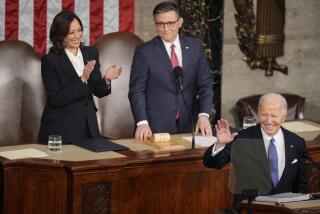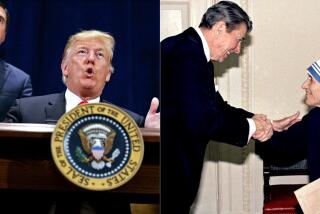Inaugural Olive Branch
President Reagan stepped into his second term on the right foot Monday, by delivering an inaugural address that held out the prospect of bipartisan cooperation with Congress on tough issues like the budget deficit. Whether the olive branch is real or illusionary will become far more apparent when he delivers his State of the Union address and sends his 1986 budget to Congress, both during the first week of February.
Reagan is adept at fitting the message to the occasion. His second inaugural address Monday generally did that. It promised four more years of executive leadership pretty much like that of the past four years. There were no major surprises or hints of dramatic initiatives from the White House. The message glossed over the severity of some serious national problems such as the deficit, unemployment, the decay of national industry and poverty. But, thankfully, the President did not engage in the patriotic excesses of his campaign rhetoric.
He toned down his anti-government rhetoric except for one unnecessary reference to “the bloated federal establishment.” And he recognized that “there is a place for the federal government in matters of social compassion.”
The unplanned transfer of the ceremony into the Capitol rotunda may have induced the somewhat intimate and conciliatory tone of his address. It was more like addressing an extended family than the expansive world outside. Waiting to speak, Reagan could not help but have noticed some of his legendary predecessors--Washington, Adams, Jefferson, Madison and Monroe--peering down from John Trumbull’s giant paintings.
“I just had a great sense of history sitting here,” Reagan said later.
History will not mark Reagan’s inaugural address as a great one. But perhaps it will be recorded somewhere that Jan. 21 marked the start of improved relations between Congress and the Reagan White House.
More to Read
Get the L.A. Times Politics newsletter
Deeply reported insights into legislation, politics and policy from Sacramento, Washington and beyond. In your inbox three times per week.
You may occasionally receive promotional content from the Los Angeles Times.










